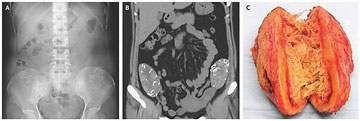Years ago, Valerie Y. Marsh, BSN, MSN, DNP, CNOR, was sure a sponge had been left inside a patient. "The surgeon swore it wasn't in there, and he wasn't going to reopen the incision to find out," recalls Ms. Marsh, a clinical assistant professor at University of Michigan School of Nursing in Ann Arbor. "I said, 'Listen, it's got to be in there. It's no place else. Can we at least get an X-ray?' So we did, and sure enough, it was there."
Nowadays in University of Michigan's ORs, it's not necessary for nurses to request that surgeons X-ray in this case. They can immediately determine if a sponge is unaccounted for by using high-tech sponge detection systems that leverage the use of special sponges containing either barcodes or radiofrequency (RF) tags to confirm an accurate count, every time.
Both barcode and RF technologies are very good and reliable, but they do have differences, according to Robert M. Cima, MD, a colon and rectal surgeon who is a professor of surgery at Mayo Clinic in Rochester, Minn. He characterizes the barcode system his institution uses as more of an accounting or inventory system, where sponges are scanned in and out to confirm the count, while RF systems employ a wand or mattress topper that can detect sponges left inside the patient or accidentally tossed in the trash.
"The barcode device truly is an accounting of sponges," says Dr. Cima. "It tells you how many sponges you opened, and how many you removed from the field."
The RF detection approach, meanwhile, centers on a small RFID chip on each sponge. "It gives you that same accounting capability, but it also gives you the capability to detect where a sponge might be," says Dr. Cima. "You have a wand, and if you're in close proximity to the sponge, it'll tell you it's there."
"When you look at the literature, the most common reason sponges are retained is because of the counting problem."
Robert M. Cima, MD
Mayo Clinic adopted the barcode technology years ago. "When you look at the literature, the most common reason sponges are retained is because of the counting problem," says Dr. Cima. "When a miscount is identified, sponges are often located once the surgical team is aware they're missing."
That's where Dr. Cima sees the true benefit of the barcode technology. "Staff place sponges under the scanner, see them register on the machine and monitor the counter," he says. "It's pretty straightforward to know sponges have been counted."
.svg?sfvrsn=be606e78_3)

.svg?sfvrsn=56b2f850_5)